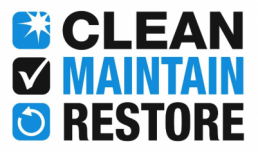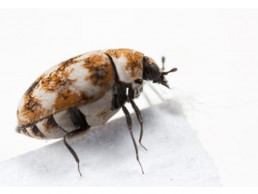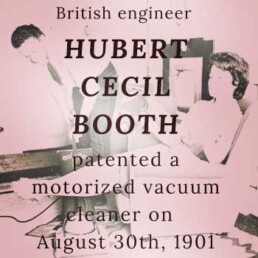What is the White Stuff on my Bricks and Pavers?
Efflorescence – Removal and Prevention
What you Need To Know
The following article discusses historic masonry but the causes and principles are the same for any stone, brick or concrete surface. The crystallization of soluble salts in Historic masonry causes severe deterioration of the substrate. This crystallization is called subflorescence. These salts are derived from several sources, including salts within
the substrate, pollution, deicing salts, and improper cleaning chemicals. Problems associated with subflorescence can be diagnosed and identified by visual clues, such as spalling and rising damp.
Accurate diagnosis of subflorescence can be confirmed with laboratory testing. Once the salts are detected there are several methods that can remove these salts. Water washing, surface rendering and poulticing are a few of the methods used. If these salts are successfully removed it is important to prevent reoccurrence. Preventative applications might include the installation of dampproof barriers, chemical injection and coating the masonry with a sealer or impregnator.
Subflorescence
The deposit of water-soluble salts in the pores of Historic masonry is the major cause for deterioration of these surfaces. These salts originate from several sources. Gauri, Holdren and Vaughan (1986) report that these salts are inherent in brick, concrete and natural stone. Boyer(1986) contributes polluted rainwater, roof salts, deicing salts and adjacent materials as the source of salt deposition. Ashurst(1994) reports that careless cleaning using improper chemicals can deposit salts causing deterioration. Regardless of the source all agree that water-soluble salt deposition contributes significantly to the rapid
deterioration of historic masonry. Grimmer (1984) defines Subflorescence as follows:
Subflorescence is a potentially harmful accumulation, or build-up of soluble salts deposited under or just beneath the masonry surface as moisture in the wall evaporates. Particularly during the freeze-thaw cycle, the moisture and salts in the wall freeze and expand, building up pressure within the masonry, which if sufficient, may cause parts of the outer surface to spall off or delaminate. (P. 22) In other words, Subflorescence is the deposit of salt crystals beneath the surface of the masonry.
Subflorescence and Efflorescence
Subflorescence should not be confused with efflorescence. Efflorescence is a deposit of soluble salts on the surface of masonry. Efflorescence can be identified by a whitish haze on the surface of the masonry.
Efflorescence can be a precursor to subflorescence since it indicates the presents of salts. Efflorescence is common and often harmless on newly constructed buildings, but if it appears on historic masonry, it should serve as a warning that moisture has found a way into the masonry.
Diagnosing and Identifying Subflorescence
Subflorescence should be suspect when the following conditions are observed on a masonry surface:
1. Spalling- Spalling of masonry surfaces can be identified by the breaking off of the surface layer. Small pieces of the outer layer will flake off in both small and large portions. Often the surface is very brittle and can easily be removed by prying with a knife. Spalling can also be called delamination when referring to manmade masonry. The term delamination is generally used for stone masonry.
2. Rising Damp- Along the base of most masonry buildings, a wet, darken outline can be detected. This darkened area usually extends from the ground to several feet above the ground. This darkening is the result of water being carried through capillary action into the porous masonry. This condition is known as rising damp. Rising damp can lead to efflorescence and ultimately subflorescence since salts can be dissolved and carried by the water. Rising damp is a concern in Northern climates where deicing salts are
used. If the moisture remains during freezing months, the water will freeze, expand and cause spalling of the masonry surface.
3. Post-Cleaning Operations- Frequently masonry surfaces will develop efflorescence within several days after cleaning. The masonry surface should be checked carefully since efflorescence can be a precursor to subflorescence. This is especially troublesome if the cleaning operation used copious amounts of water. Excessive use of water can saturate the masonry, dissolved salts within the masonry, causing spalling.
4. Chemical Cleaning Operations- Certain chemicals can deposit soluble salts within the pores of the masonry if not rinsed thoroughly. Alkaline cleaning chemicals contain alkaline salts that can crystallize causing spalling of the masonry surface. If spalling occurs shortly after cleaning check the type of cleaners used.
Testing for Soluble Salts
If soluble salts are suspected, a simple field test can be used to determine if salts are present. To determine the type of salts, thus leading to a possible source, laboratory tests must be conducted. The following describes these tests.
Field Testing- London (1988) describes a simple qualitative test for determining the presence of soluble salts using a protimeter. The test uses the principle that dissolved salts have a higher capacity to conduct an electrical current. A filter paper is saturated with distilled water, placed on a rubber block and a reading taken with the protimeter. A second filter paper is saturated with distilled water, placed on the suspect
masonry and a reading taken. If the reading on the masonry is higher than the reading on the control, then soluble salts may be present. This test does have a margin of error and can be misleading. It is advised to verify with laboratory testing.
Laboratory Testing- Laboratory testing can determine quantitative as well as the exact identification of the salts. It is important to know which type of salts are present in order to determine the origin. Most all salts in historic masonry can be classified as follows:
Chlorides- Chloride salts are found in deicing salts. Ashurst (1988) also reports that chlorides can be hygroscopic, taking moisture directly from the atmosphere. Chlorides can also be found in high concentrations in environments near oceans and salt marshes. Chlorides can also be present in the makeup of the masonry itself.
Nitrates- If nitrate salts are detected, groundwater should be suspected. Nitrates are commonly found in fertilizers and in soils.
Carbonates- Carbonates are found in high concentrations in masonry mortars continuing lime. Carbonates are also present in pointing mortar and will usually present a problem when a building is repointed.
Sulfates- Sulfates are found in air pollution from vehicle exhaust, industrial pollutants, etc. Sulfates are an increasing problem in areas where pollution is high.
Alkaline and Acid Salts- Alkaline and acid salts are deposited into historic masonry when cleaners are used and not rinsed probably. If efflorescence and/or ubflorescence occurs shortly after cleaning, these salts should be suspect. Hydrofluoric acid is commonly used to clean historic masonry since it is one of the few chemicals that do not deposit soluble salts (Ashurst, 1988).
Subflorescence
Removal of Soluble Salts
Before any attempt is made to treat historic masonry and to remove both efflorescence and/or subflorescence it is necessary to find the origin of the salts. If this is not found, further damage may result. Once the origin is found the first step in salt removal is to eliminate the source. There are several methods for the desalination of historic masonry. The following methods have proved successful but are not foolproof. It is vital that these procedures be performed by trained and experienced
individuals. Ashurst (1988) describes two possible procedures for the removal of soluble salts, poulticing and sacrificial rendering. Poulticing uses an absorbent clay mixed with distilled water into a paste. This past is applied to the masonry, which has been saturated with water. As the clay dries it will absorb the moisture from the masonry carrying the salts with it. Poulticing can be an effective treatment for removing soluble salts but caution must be exercised since salts can be drawn to the surface and crystallization may occur. Sacrificial Rendering uses an application of a thin coat of a lime and sand mixture. This mixture is trowel on the wall as if applying stucco. The principle is that the rendering will absorb moisture and transfer the soluble salts to it. Gauri et al (1986) describe two suction techniques for the removal of soluble salts. The suction method uses a vacuum pump attached to a funnel. The masonry is saturated with water and the vacuum pump pulls the moisture out with the soluble salts. This method can be time consuming on larger surfaces but industrial equipment is available that can process several hundred square feet per day. Grimmer (1984) suggests the use of water washing to remove efflorescence. The water washing method employs the use of water sprayed on the surface of the masonry. The water can be applied with high pressure, low pressure, intermittent with an endless number of spray patterns. Water washing is the most common method employed for cleaning historic masonry but does have its shortcomings. Chemical cleaning is often used in an attempt to remove soluble salts with little to no result. Hydrofluoric acid is the most often used chemical on masonry surfaces. The acid works by dissolving the salts which are rinsed away after a timed dwell period. Hydrofluoric acid also is damaging to the masonry itself since it dissolved the substrate. Whichever method is used it is important to perform a test on the masonry and monitor it closely for any harmful effects.
Preventing Subflorescence
Damaging salts are carried into historic masonry by moisture. To prevent salt deposition it is necessary to eliminate the moisture. Grimmer (1984) suggests using a dampproof course. This damp proof course consists of placing a material such as plastic, horizontally in a masonry wall to prevent moisture from rising into the substrate. Injecting chemical plastics into the masonry have also been used to eliminate moisture as well as the application of sealers and impregnators.
Whichever preventive treatment is used it is important to remove the existing salts. This can be accomplished by the methods mentioned above or the masonry should be left alone and the salts allowed to migrate out. This is especially important with chemical treatments. Sealers, consolidants, and impregnators should not be applied to masonry containing salts. The application of these sealers, etc. will prevent moisture from escaping, accelerating the chance of deterioration.
Conclusions
The deterioration of Historic masonry through the crystallization of soluble salts is a growing problem in the preservation community. Improper cleaning techniques and air pollution both contribute to the buildup of these salts. It is important that the proper diagnosis is formulated so that further damage is not caused. Desalination practices and procedures must be tested and performed by experienced individuals.
By Frederick M. Hueston
References
Ashurst, J. (1988). Practical Building Conservation. New York: Halsted Press.
Ashurst, N. (1994). Cleaning Historic Buildings Volume I. London: Donhead.
Boyer, D.W. (1986). Masonry Cleaning-The State of the Art. American Society for Testing and
Materials. 25-51.
Gauri, K.L. (1986). Cleaning Efflorescence from Masonry. American Society for Testing and Materials.
3-13.
Grimmer, A. (1984). A Glossary of Historic Masonry Deterioration Problems and
Preservation Treatments. Washington: Department of Interior.
London, M. (1988). How to Care for Old and Historic Brick and Stone. Washington: Preservation
Press.
Where Did The Bugs In My Carpet Come From?
Found Bugs In Your Carpet?
They can get into the carpet pile after manufacturing before it leaves the manufacturing warehouse. They can also get into the carpet during shipping, after delivery to the dealer or after installation.
If bugs show up in the home after the new roll of carpet is installed, the bugs may have already been present in the home prior to installation, or the eggs were laid in the pile sometime after the manufacturing process.
Bugs cannot survive the heat generated in the manufacturing of the carpet. Prior to dyeing, the carpet is sprayed with boiling hot water at about 214°, to open up the dye sites. After dying, the carpet goes through the finishing ovens at approximately 250°- 300°. Bugs cannot survive this process.
In order to survive, the bugs must feed off food droppings or dried animal products such as wool, silk, felt, hair, fur, feathers, dead animals, and stuffed trophy heads. They cannot feed off the synthetic material used to make the carpet.
The fact is that it is difficult to determine exactly where the bugs came from. Finding an Entomologist to identify the bug is often helpful in determining where they came from. (Some bugs aren’t found in certain parts of the country.)
Who is responsible?
Do not point fingers or blame any certain party, because it is far too difficult to find the source of your bugs. The best plan is to call a pest controller and move on.
Carpet made of synthetic fiber have no life-sustaining nutrients for bugs to feed on. They do not feed on synthetic fabrics unless the synthetics are blends, or they are stained with urine, sweat, or food.
Carpet beetle larvae are repelled by light and are usually found burrowed deeply into infested material or in drawers, cases, and storage bins. The adults are often seen crawling up walls and congregating on window ledges.
Why Does My Yellow Carpet Have Blue Squares?
You’ve booked a carpet clean.
To get ready, you’ve decided to move some of the bigger furniture so you can clean the skirting board behind them and give the place a spring clean.
But, there is a problem – where the furniture was, the carpet has turned blue – or has it?
Yes, your carpet has blue squares that match your furniture exactly. So how did they get there?
Easy – they always were there. It’s the rest of the carpet that’s changed.
First a little bit of science.
Carpets are dyed with a mix of colours (remeber mixing paints together in primary school).
Of all the colours used, blue is usually the first to be removed by chemical reactions.
The possible reactions are wide and varied, but ozone fading is one and ultra-violet bleaching is another.
Some early nylon carpets used dyes that simply broke down over time with exposure to ozone and sunlight – both naturally substances.
With the blue component of the carpet colour being the most likely to react, it was the first colour to fade.
Hence, the carpet went from a blue-ish colour to a yellow-ish colour (yellow being more stable than blue).
So why are there blue squares on my carpet?
Easy – the furniture has protected the carpet from the chemical reaction – the ozone or the sunlight, so it stays blue.
Do I Have To Move ALL The Furniture To Clean The Carpets?
This may sound like a weird subject to write about, but it is a question that I get asked regularly.
Well, does the furniture have to be moved?
I’ll answer it this way. The first thing that I notice is that some people think I come in and become the Lord and Master.
Now I might have enough equipment to make it look like I am trying to take over the house, but I am a guest in your house. You have the right to kick me out at any time, even before I finish the job.
So, when the subject of moving furniture is mentioned, my answer is, “You move what you want to move. I will work around what you want.”
To help you figure out what is normally moved, most people don’t move their TV. Modern televisions are large, heavy and are plugged into around 14 other appliances using approximately 87 separate leads and cords. They take about five hours to pull apart and the rest of the month to put back together. Most people look at their TV and just walk away.
The same goes with wall units. When we moved into our current house, it came with a free wall unit, because it was too big to move. So if professional removalists can’t move it, when I clean the carpets, I don’t move it either.
Large dining tables are another item I usually work around. After all the chairs have been moved, the table is moved to one side of the room to allow as much of the room to be cleaned in one pass. Then the table gets moved over to the clean side to allow the other half to be done.
Couches and recliners are treated the same. Push them to one side of the lounge room, clean and then push them back.
There is only one question that I have when pushing furniture around during cleaning and that is “Does it have wooden feet?”
Although I take care with my machines, accidents can happen. If you have a particular item that is fragile or valuable (or both), then it might be a good idea to put it in a safe place. The little bit of time you spend shifting those special items might save you hours of heartache if I accidentally bump them and damage them.
I have insurance, but as a volunteer firefighter, the saying
Prevention is Better than Cure
certainly applies in this case.
I hope this helps you next time I call and visit your house.
Is Dyson the Best vacuum cleaner?
In my opinion – the Dyson is not the best.
After saying that, now I say this – a Dyson vacuum cleaner is a great machine and very well designed. We have one at home, it gets used regularly and I am genuinely happy with how everything works and fits together.
Do I have one in my van? No.
That’s because for my business I want a solid machine that won’t break when it gets dropped, will remove great piles of dirt from carpets, mattresses and upholstery and keeps going day after day after day.
For this reason I use a Kirby vaccum cleaner from the United States. It’s built like a rock, drags heaps of junk out of mattresses, couches and carpets and if it breaks, I can buy spare parts for it easily.
So what’s wrong with the Dyson?
As I said before, they are a well designed piece of equipment. But it is designed to be a bagless vacuum cleaner. The big appeal for consumers regarding bagless cleaners is the fact they don’t have to buy bags. And if you watch the Dyson advertising closely, there is a greater emphasis about ease of use instead of how well the Dyson vacuums up heavy dirt and debris.
The advertising is slanted towards ease of use because they are light and easy to use. This is how Dyson sell their product.
Why do they push the ease of use? Because it’s a popular way of selling anything. In these days of swiping and tapping phone screens, making a product over complicated is almost a sure fire way of killing sales.
Dyson are very clever marketers by emphasising the simplicity of their machines. They also look good and even though people don’t always buy a vacuum for looks, it’s all part of the package.
When Should I Book For A Carpet Clean?
Are you thinking about booking a carpet clean to Make Your Space A Better Place?
- So when do you want it done?
- When are you going to call?
- How much time do I need?
I have a basic rule of thumb.
Allow Two Weeks
It may sound like a simple thing, but anything that is high quality is usually in demand.
Carpet cleaning professionals are exactly the same.
Imagine booking open heart surgery with a cardiac specialist and they say “We can fit you in this afternoon.” You would have second thoughts about why they can fit you in so quickly.
All the good operators will have full diaries, so if Aunty Mavis is making her trip of a lifetime from London, don’t try to book a cleaner the day before she arrives.
Christmas Carpet Clean
Ahh, yes!! Christmas – everybody wants their house looking great for Santa, and everybody leaves it to the last minute and then complains that they can’t make it fit their plans.
So just book your Christmas clean in November, please!!
Spring Cleaning
Before you pick up the phone, what else needs cleaning?
The majority of carpet cleaners are equipped with the right gear for basic upholstery cleaning as well as tiles and grout.
Asking for a package deal could get much more of your house sparkling for just little extra cash.
For specialty cleaning, such as leather, silk and cotton, you will probably have to do some research to find a business that has the training and experience in these fields.
It’s common for cleaning firms to start out with carpet cleaning and then add more services as they grow, so other services like pressure cleaning and gutter cleaning is possible.
And before they knock on the door, how about a spring clean?
By de-cluttering your wardrobes and spare room, it’s easier for the cleaner and you’ll have less junk as well.
Don’t forget to dust up high, including the tops of the ceiling fans. Any dust that falls onto the carpet will be removed by the cleaning process.
Renovations
I understand that people want their house to look great after renovations but booking a carpet clean before all the other work is completed can backfire.
The first issue is other trades don’t like working on wet carpet – it just complicates things and makes their socks wet (if they remember to take their boots off).
They also don’t like big hoses running through their workplaces as the hoses can pull over ladders, toolboxes and paint cans (remember – a paint spill can make a BIIIGGGG mess).
Floorboards – if the lacquer hasn’t fully cured, running carpet cleaning hoses over freshly lacquered floorboards can leave permanent marks.
Not only can the heat from the supply hose and metal fittings cause issue permanent issues, but the vibration from the vacuum hose can leave unwelcome prints in your brand new floor.
Curing can take up to four weeks, so talk to your floorboard installer first to understand the risks.
Painting – paint also has an optimal curing time. Carpet cleaning hoses and wands can get a bit clumsy in tight spaces. Very fresh paint can be easily damaged. Talk to your painter and find out how long they recommend to let the paint FULLY cure.
Carpentry – any sawing, drilling and sanding will leave behind some debris and rubbish.
This must be removed from your carpet before cleaning, so please tell your carpet cleaner as large amounts of debris can affect the price.
The upper level professionals will have counter rotating brush units that can be used before vacuuming to remove bigger particles like sawdust and wood shavings.
Pets
Now is the time to sort out Tibbles and Fido – before you make the booking.
There are a few little things to think about.
Doors being open provide plenty of escape paths for cats and dogs and the noise of vacuum cleaners and carpet cleaning machines can scare some animals .
And remember, you can’t lock them in the bedroom if the bedroom carpets are being cleaned.
If you have booked a tile and grout clean, tile cleaning detergent is quite strong and could burn the pads of your cat or dog, so it’s best that they be locked up for their own safety.
Power and Water
So, you’ve made the phone calls, packed away the valuables and the van backs up into your driveway. There are still some questions you’ll be asked about.
First is water. If your cleaner has a truck-mounted system that’s bolted inside the van, they will be looking for an outside tap to hook up to.
If they use a portable machine, it’s likely they will look for a hot water tap in the laundry or kitchen.
For vacuuming as a minimum, access to power points will be needed. Again, if your cleaner uses a portable machine, they will need extra power points for the machine too.
Why Has The Furniture Left Brown Spots?
One of the rules of carpet cleaning is to be careful of the water.
That may sound a bit stupid, but I will explain.
The water is used as part of the cleaning process – everybody knows that, but how the technician uses the water can make a big difference.
First, steam cleaning water has to be hot. The main reasons are that hot water will clean better than cold water and hot water will evaporate faster than cold water.
The second point is important as the speed of evaporation means faster drying. Faster drying means your furniture can go back on your carpets faster, which means your house is back to normal and your life is back to normal.
When wooden furniture is put back on wet carpet, the moisture from the carpet can work its way into the timber, especially if the end of the timber is open and unpainted.
The water can leach out the tannin in the timber and allow the tannin into the carpet.
The tannin will show up in the carpet as brown coluring which will be the same shape as the furniture legs. When this happens, the carpet is potentially un-repairable as the tannin is a natural dye and cannot be shifted by normal stain removal processes.
The tannin needs to be stripped from the carpets and the carpet re-dyed back to the original colour. The success of this colour repair is dependent on a number of factors.
So if you get your carpet cleaned and the feet of your furniture are NOT plastic or metal, then you will have to leave the floors clear until the carpet is completely dry OR you can ask the cleaner for some temporary feet to place under the furniture.
Normally the feet are small sheets of plastic or foam blocks, which proivide a barrier to stop the moisture in the carpet from getting into the timber.
How to Vacuum Carpet without Electricity
What happens if the electricity is disconnected before you arrive?
To vacuum carpet, you need vacuum (no kidding you say!!)
Almost all truckmounted carpet cleaning machines will outperform your standard electric vacuum cleaner with ridiculous ease.
And this is how it’s done.








